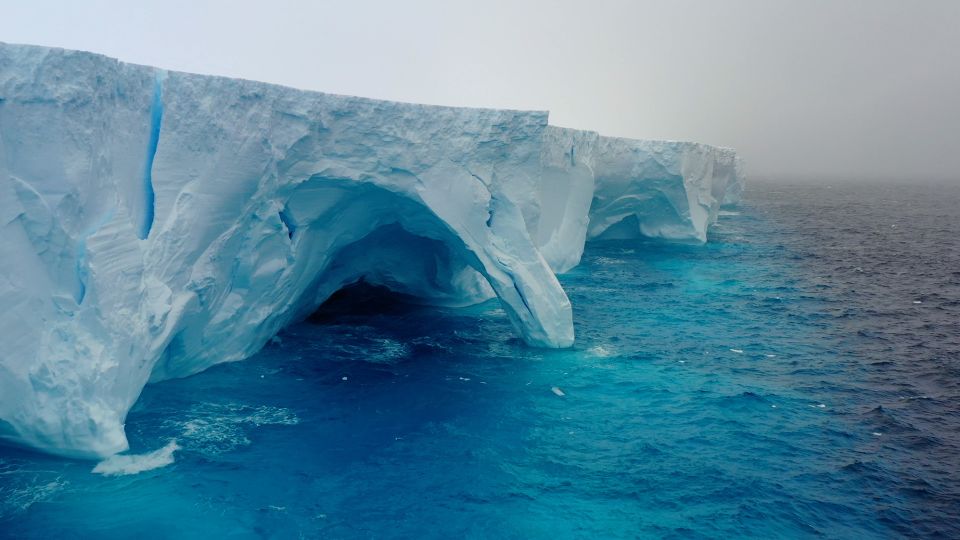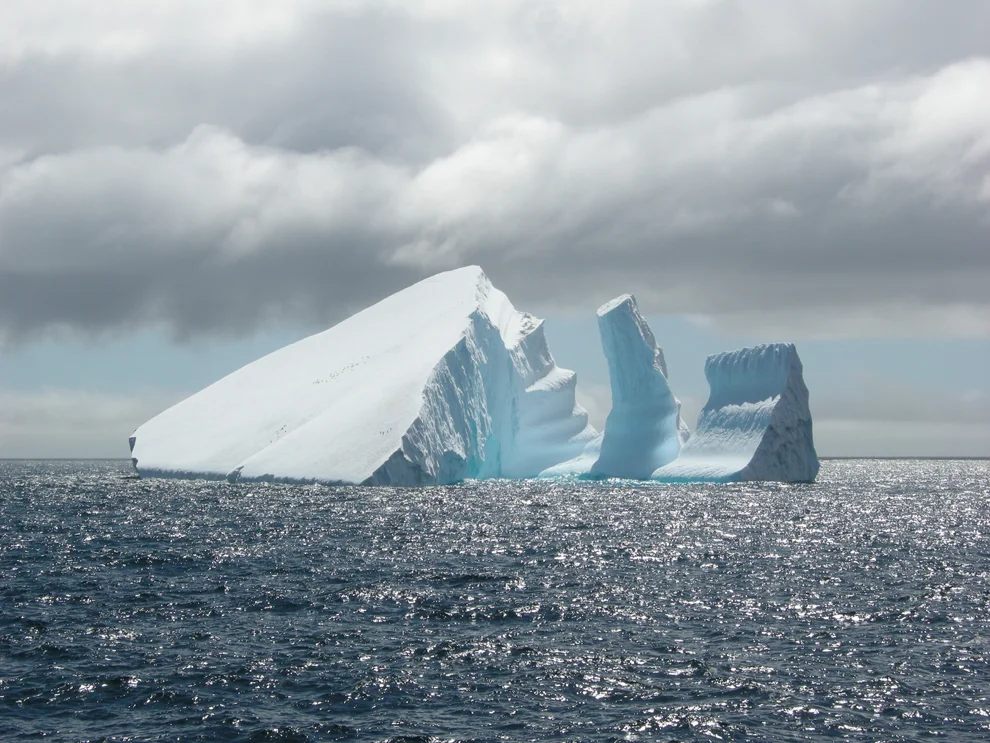Prepare to be captivated by the awe-inspiring display of nature as the world’s largest iceberg, A23a, commences a breathtaking journey through the Antarctic seas, marking what could be its final voyage after three decades.
Twice the size of Greater London, A23a has recently broken free from its anchor on the Antarctic ocean floor, revealing its colossal stature. Born in 1986, this frozen giant is now gracefully drifting between Elephant Island and the South Orkney Islands, covering an expansive 4,000 square kilometers and boasting thicknesses of up to 400 meters in certain areas.

Expedition leader Ian Strachan recounts the mesmerizing sight as the ship approached A23a through snow and fog. Its jagged edges, reminiscent of sheet music notes, unveiled intricate crevasses and mesmerizing blue arches, shaped by the forces of nature over the decades.
In a recent scientific expedition to Antarctica, the RRS Sir David Attenborough from the UK came across A23a, obstructing its route. Chief scientist Andrew Meijers vividly recounts the enchanting experience, with mist parting, the sun emerging, and a pod of orcas adding to the scene’s beauty. The six-hour journey past the iceberg etched an enduring memory of nature’s breathtaking spectacle.
As A23a gracefully journeys northward, Andrew Fleming of the British Antarctic Survey assures that such icebergs are a natural process. Following the path of its predecessors A68 and A76, A23a navigates through the perilous “iceberg alley.”
While concerns persist about its potential impact on wildlife near South Georgia island, experts believe the iceberg will continue its course, ultimately succumbing to its fate – melting away in warmer waters.
As the colossal iceberg approaches the conclusion of its glacial journey, scientists and spectators alike bear witness to a fleeting marvel, serving as a poignant reminder of the ever-changing dynamics of our planet. Nature’s grand symphony unfolds, leaving an indelible mark on those fortunate enough to witness this extraordinary display.




